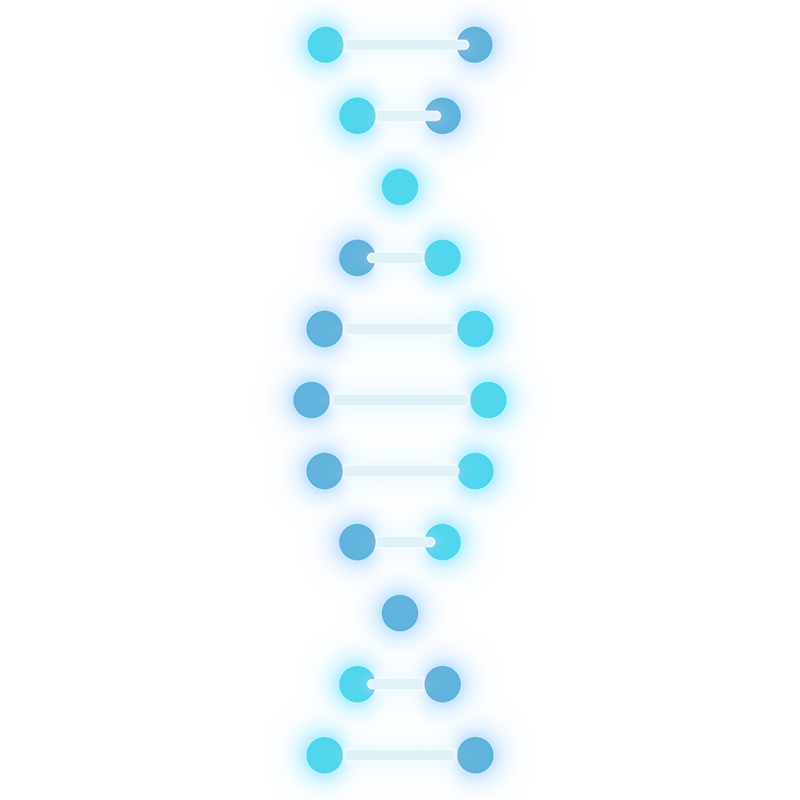- Other Products
- CCP
The promise of gene therapy
Although the principle of gene therapy may be straightforward, the complexity and scope of the analytical methods associated with this technology are not.
Svar is in a unique position to offer assistance in any gene therapy project. We have robust platforms suited for all phases of drug development, as well as the experience and knowledge from our diagnostic and bioanalytical services. We are currently developing cell-based assays for immunogenicity and potency testing. Furthermore, we can create custom projects tailored to your specific needs to create truly tailor-made assays. Our Bioanalytical Services offer flexible solutions adapted to your needs and requirements.
Due to recent breakthrough innovations within gene therapy, this is the light at the end of the tunnel. With the use of gene therapy, defect genes can be replaced by functional genes, with the aim to restore normal function.
Advanced therapeutic platforms like gene and cell therapies offer tremendous potential for treating unmet medical needs. However, they are extremely challenging to develop successfully.
This is where Svar Life Science can be your expert partner. We have extensive knowledge within the field of cell-based assays, immunogenicity and drug development, making us the ideal partner when venturing into this new and exciting area.

Partner up with us and get a full-service solution where assays can be developed and tailored to your specific needs. We are also available to assist with running these assays in our GLP (soon-to-be GMP) certified bioanalytical lab.
The rapid development in molecular biology over the last few decades have revolutionized how we think of disease. A wide range of disorders have been found to have a genetic basis and many of the underlying gene mutations have been identified.
The principle of gene therapy is straightforward: deliver a functional gene to target cells in the patient to restore normal gene function. This is most commonly achieved using a recombinant Adeno-Associated Virus (AAV) vector where some of the viral genetic material has been replaced by a therapeutic cargo. Once the virus has infected the target cell, it uses the cell’s molecular machinery to produce the therapeutic protein.
Gene therapy holds great promise as an effective treatment of these diseases. Over the coming decades, gene therapy treatment of a wide range of disorders, such as inherited diseases, cancer and viral infections, may be commonplace.
Find out how the iLite Technology can help move the promise of gene therapy to reality.
Gene therapy introduces a number of analytical challenges that are not encountered with conventional biopharmaceutical products. Complex and time-consuming bioassays are needed throughout the study to assess product potency, confirm product identity, identify impurities and test for immunogenicity. With the iLite Gene therapy solution we can offer advanced analytical methods to address these challenges.
We are now bringing the benefits of iLite® technology to gene therapy by introducing AAV responsive cell lines.
A common first step in gene therapy is to find out if the patient carries antibodies against the virus vector. Such antibodies are present if the patient has been subjected to the virus previously. If such neutralizing antibodies (NAbs) are present, the virus capsid will be destroyed and not able to infect the cells and deliver the gene, thus rendering the gene therapy ineffective.
Svar’s iLite® cell-based platform has a long track record of measuring NAbs against biological drugs in patient material. By combining the reproducibility and ease-of-use of assay-ready cells with the robustness of dual reporter gene assays, iLite® assays offer fast and high-quality results for a wide range of targets. These assays are ideal for detecting antibodies against the viral vector in human serum.
Another very important step in gene therapy is analyzing the finished therapeutic product, hence the protein that is being produced by the cells as an result of the corrected and/or inserted gene. Potency testing is performed in a pre-clinical, clinical or CMC setting to show a clinical effect and ensure batch-to-batch consistency. This is another area where iLite® technology is ideally suited. We are developing a robust in vitro assay for the measurement of therapeutic product potency. Read more about potency testing.
Although the novelty of Gene therapy as an advanced analytical field, outside the research institution, we have already gained experienced from such projects within our Bioanalytical Service Lab. Here we have performed immunogenicity projects for investigating antibody response against the gene product protein and measuring the protein produced from the gene product. We have developed a TK assay for a mAb drug that will be administered as a gene product in non-clinical and clinical studies. To mention a few.
Our goal is to leverage the knowledge form our customised gene therapy projects into our service offering and delivering bioanalytical excellence through a collaborative approach. Read more here

Moving from Promise to reality - Hurdles to overcome
Gene therapy has experienced both setbacks and successes in its short history, all of which have shaped the therapeutic field into what it is today: one with great potential. In fact, by 2025, the US FDA predicts it will be approving 10 to 20 cell and gene therapy products a year.
But in order to move from promise to reality, it is important to understand the challenges so that new methods are developed that ensure safe and effective products for patients.
Although the principle of gene therapy may be straightforward, the complexity and scope of the analytical methods associated with this technology are not. It introduces a number of analytical challenges that are not encountered with conventional biopharmaceutical products. Complex and time-consuming bioassays are needed throughout the study to assess product potency, confirm product identity, identify impurities and test for immunogenicity.
This new field generates more questions than answers.
To further complicate matters, gene therapies are multicomponent drugs; they do not simply consist of one molecule, or even one fusion or multidomain molecule. Each part of the drug—the delivery vehicle (or vector), the delivered nucleic acid (or cargo), and the therapeutic protein encoded by the nucleic acid—can trigger a distinct immune response and can be hard to assess – both as individual components but also as part of a system.
Furthermore, the lack of an industry track record and guidelines have made the situation even more complex. Here, scientists and pharma companies struggle with questions like;
Recently both the FDA and the EMA have released guidelines to help companies navigate this treacherous landscape with the safety of patient being the number one concern. Both agencies have outlined recommendations regarding conducting long-term follow-up (LTFU) in their respective regulatory protocols. These assessments ensure that patients are monitored for delayed adverse events and are receive optimal treatment over the long-term.
Despite all these hurdles, let's not forget that this is an amazing scientific breakthrough where we have to possibility, to not only treat but potentially cure several diseases. Our goal is to help move Gene Therapy from a future promise to a reality and a commonplace for treatment of a wide range of disorders, such as inherited diseases, cancer and viral infections.